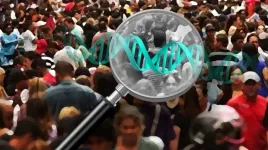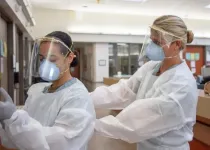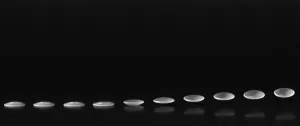REDOME is the world’s third-largest bone marrow bank, with more than 5 million registered voluntary donors.
According to the study, having mainly African genetic ancestry can reduce a person’s chances of finding a donor by up to 60%, and having African copies of HLA genes, which must be compatible with the donor’s to make a transplant possible, can reduce them by 75%.
As the degree of African ancestry increases, the likelihood of finding a match on REDOME decreases, according to the study, which also discusses what the authors argue is a weak correlation between self-identification in accordance with the categories used by IBGE, the national census bureau, and actual genetic ancestry. IBGE’s classification “explains only a small amount” of people’s ancestry, they write.
“The classification is coarse in terms of predicting the genes that matter for transplants, which are the immune function genes, but it’s used by REDOME. Donors have to choose one of these categories when they fill out the registration form. A person can be of African or European ancestry in terms of immune function genes, but the identifiers ‘black’, ‘brown’ and ‘white’ don’t really line up with those categories,” said Diogo Meyer, a professor at USP who specializes in population genetics and was the principal investigator for the study.
The study concludes that people who self-identify as “preto” (black) or “pardo” (brown, i.e. mixed) are up to 57% less likely to find donors than those who self-identify as “branco” (white).
HLA (human leukocyte antigen) immune function genes bind to antigens, including potentially toxic residues of cellular metabolism or fragments of an invading pathogen. T-cells, an important part of the immune system, can distinguish between antigens produced by the organism and invaders. When HLA molecules bind to antigens that are not recognized, immune responses are triggered. A perfect match between recipient and donor is therefore critical to avoid rejection and assure the success of a stem cell transplant.
There are several reasons for the difficulty of finding a match for Brazilians of African descent, Meyer explained. They are not proportionally represented in REDOME, which anyway uses imprecise ethnic categories. They are more diverse and heterogeneous genetically than the rest of the population, and two unrelated Africans are unlikely to have identical HLAs because human migration began in Africa. The people who made the journey carried only part of the existing variability.
The paper, whose first author is biologist Kelly Nunes, a postdoctoral fellow at USP, associates the 75% reduction in the odds of finding a donor with having an MHC region of exclusively African ancestry. MHC stands for major histocompatibility complex, a group of genes that help the immune system recognize foreign substances. It includes the HLAs.
“Self-identification as ‘preto’ is a predictor that the person has African genetic ancestry in their genome. That includes immune function genes, which are the ones that matter in the case of a transplant,” Meyer said. “This is a rule of thumb, however, and there are exceptions, especially in a highly admixed population like Brazil’s, where it’s not unusual for a person who self-identifies as ‘preto’ to have European HLA genes. Indeed, donors for African patients in REDOME may self-identify as ‘branco’. However, the more genetically African individuals we found in a population sample, the larger the proportion of black donors.”
The results do not mean black people have no chance of finding a donor in REDOME, Meyer stressed. “We compared the probabilities of matches for different ancestries. In an actual transplant case, HLA typing has to be done to a high degree of precision, and the donor must be in good health and have a carefully analyzed genotype to make sure they’re genuinely compatible. Each step reduces the chances of a transplant occurring,” he said.
The study was supported by FAPESP via a Regular Research Grant and a postdoctoral fellowship in Brazil.
Combinations of chromosomes
Many questions remain unanswered, according to Meyer. “One thing we haven’t addressed so far is whether what makes it hard for Brazilians with African ancestry to find donors is having African chromosomes or having an admixture of African and European genes,” he said. “The European and African parts are presumably represented in REDOME, but the two combined may be rare, and thousands of these combinations may be possible.”
According to Meyer, the team cannot yet answer the question regarding the degree to which admixture and the percentage of African ancestry hinder a match. “These two things are a little different. What we know is that on average people with African HLA genes tend to have more difficulty than people with European ancestry,” he said. “It remains to be seen if there are combinations of European and African chromosomes that can also reduce the probability of a match.”
In Brazil, moreover, the term “African” can refer to people from various different parts or regions of Africa. “We may be dealing with genotypes that only exist in Brazil – a mixture of ancestries associated with different parts of the African continent,” Meyer said. “All this depends on what’s represented in REDOME since we didn’t characterize the repository from the genetic standpoint. We just had the labels ‘preto’, ‘branco’ and ‘pardo’.”
Methodology and sampling
The group, which comprised scientists in the areas of human health, biology, statistics, and computation, used two Brazilian cohorts as samples: Recipient Epidemiology and Donor Evaluation – Brazil Sickle Cell Disease (REDS-III Brazil SCD); and EPIGEN-Brazil, part of a Latin America-wide population genomics and genetic epidemiology initiative.
From the former they selected 2,703 individuals with sickle cell disease recruited from four institutions: three blood banks (Fundação Hemominas in Belo Horizonte, Juiz de Fora and Montes Claros; Fundação Hemope in Recife; and Fundação Hemorio in Rio de Janeiro); and the Children’s Institute of Hospital das Clínicas, the teaching and general hospital run by the University of São Paulo’s Medical School (FM-USP).
In the case of the EPIGEN-Brazil cohort, 5,334 individuals from Salvador (Bahia State), Bambuí (Minas Gerais State), and Pelotas (Rio Grande do Sul State) were included in the study sample.
“The sample wasn’t made up of people on the waiting list for a bone marrow transplant,” Meyer said. “It was a convenience sample comprising individuals with known ancestry.” With regard to those with sickle cell disease, however, the results may anticipate future situations. “Most people with the disease are of African descent and there’s a prospect of treatment by marrow transplant, so these are people who may benefit from this type of intervention in future.”
Laboratory analysis of the genotypes of more than 8,000 individuals would have been too costly, so the researchers used a technique called SNP-based HLA imputation. “The structure of our genome lets us make predictions. A mutation in one position in the genome can predict another since we pass on our genetic material in the form of bits of chromosomes. These bits are recombined, but not fused as if in a blender: there’s a certain logic, enabling statisticians and geneticists to develop an algorithm to predict a person’s HLAs from the mutations in their physical vicinity,” Meyer explained.
The software used to infer genetic ancestry was fed with data for the frequency with which genetic variants occur in the ethnic groups comprised in the Brazilian population.
Next steps
According to the researchers, the results support the idea that if REDOME wished to be representative and assure equitable access to people of African descent, it would have to have more donors with African ancestry. “However, for people of African descent to have as many matches as people of European descent, it would probably be necessary for the proportion of the former in REDOME to be larger than the proportion in the total population, since they’re more ‘demanding’ in terms of sampling.”
The researchers now plan to find out whether it is difficult for Brazilians of African descent to find a donor because African chromosomes are rare in REDOME or because the admixture with European chromosomes creates hard-to-locate combinations. “We also want to conduct an evolutionary quantitative study to investigate kinship in terms of MHC in different parts of the world – in other words, to find out how much more closely related two Europeans are on average than two Africans,” Meyer said.
INFORMATION:
About São Paulo Research Foundation (FAPESP)
The São Paulo Research Foundation (FAPESP) is a public institution with the mission of supporting scientific research in all fields of knowledge by awarding scholarships, fellowships and grants to investigators linked with higher education and research institutions in the State of São Paulo, Brazil. FAPESP is aware that the very best research can only be done by working with the best researchers internationally. Therefore, it has established partnerships with funding agencies, higher education, private companies, and research organizations in other countries known for the quality of their research and has been encouraging scientists funded by its grants to further develop their international collaboration. You can learn more about FAPESP at http://www.fapesp.br/en and visit FAPESP news agency at http://www.agencia.fapesp.br/en to keep updated with the latest scientific breakthroughs FAPESP helps achieve through its many programs, awards and research centers. You may also subscribe to FAPESP news agency at http://agencia.fapesp.br/subscribe.



